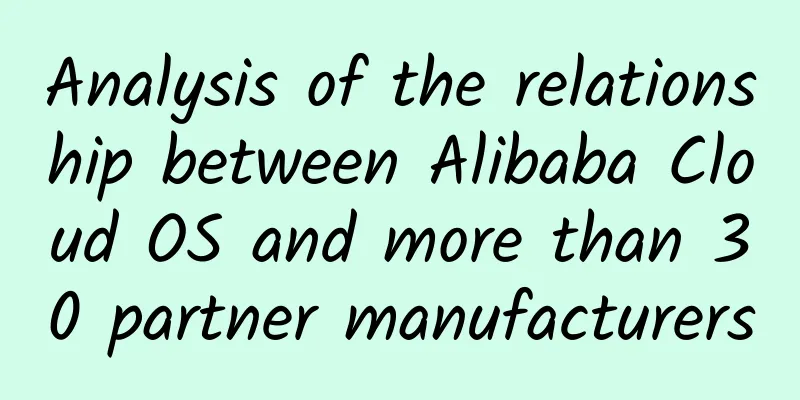Why are fruits becoming sweeter and sweeter? Is this unhealthy?

|
Have you noticed that fruits are getting sweeter nowadays? Internet-famous fruits such as Sunshine Rose Grapes and Honey Sugar Plums are all about "pure sweetness", and ordinary fruits have also become sweet. Eating two slices of watermelon is like drinking sugar water. Taking a bite of Hami melon is so sweet that it can be squeezed into sugar. Even blueberries, dragon fruits, plums, and oranges, which are not mainly sweet, have also embarked on the path of becoming sweet. Image source: unsplash Photographer: Jonas Kakaroto In the past, when we bought fruit, we always asked, "If it's not sweet, we will refund it, right?" Now we don't even need to ask, we can buy it with our eyes closed and it will be sweet enough. Some people even have to do the opposite and confirm with the shopkeeper again and again, "Is it not pure sweet, but sweet and sour?" before they dare to buy fruit. Why are fruits so sweet nowadays? Do these extremely sweet fruits contain excessive sugar? Can we still eat them without worry? Fruits are getting sweeter? And they're getting sweeter Fruits are becoming sweeter and sweeter, which is actually the result of the efforts of consumers and the market. Sweetness is an instinctive pursuit of human beings. "Sweetness" often means the presence of sugar, which can quickly and efficiently provide energy for the normal functioning of the human body. In addition, the intake of sugar can promote the release of dopamine in the human body, producing a sense of pleasure. The dual satisfaction of physical and mental satisfaction makes people unconsciously prefer sweeter foods. For a long time, consumers have been hoping to eat sweeter fruits, and consumer choices will drive market changes. In order to meet consumer demand, the entire production chain from breeding to cultivation will strive to achieve the "sweeter" indicator. Breeding is the first step to sweeten fruits. In order to cultivate varieties that meet demand, hybrid breeding, rootstock breeding, bud mutation breeding, ploidy breeding, molecular marker-assisted breeding, etc. are all commonly used technical means. With the support of these various breeding methods, not only the speed of launching new varieties is getting faster and faster, but the improvement of fruit sweetness is also very obvious. In the past, watermelons with a sweetness of 12 were already very high, but the new watermelon variety Golden Luohuang launched by Japan in 2020 not only has an attractive golden flesh, but also has a sweetness of up to 20. The sweetness of ordinary pineapples is generally around 8 to 10, while the sweetness of the Philippine Black Diamond pineapple can reach 16. Image source: unsplash Photographer: Sahand Babali New varieties are constantly raising the ceiling of fruits. And increasingly sophisticated cultivation techniques can also contribute to the sweetness of fruits. Appropriate water and fertilizer, temperature difference between day and night, fruit and branch thinning, bagging and other cultivation operations can also increase the accumulation of sugar in fruits to a certain extent, allowing fruits with high sweetness genes to fully demonstrate their high sweetness characteristics. With the help of breeding and cultivation, fruits are not only sweeter, bigger, and prettier, but also have more stable flavors. As long as you find a suitable variety, you rarely have the problem of tasting good this year but not the next year. Some more "unique" demands can also be met. For example, in recent years, consumers have demanded fruits that are "easier to eat," so merchants have launched seedless Kyoho, seedless watermelon, soft-fruited kiwifruit and other worry-free varieties that don't dirty your hands or require you to spit out seeds. Of course, fruit breeding is not a purely scientific act. In addition to meeting consumer demand, it is also driven by capital and business. The popularity of highly sweet or even extremely sweet fruits is related to the high economic value of these fruits. In particular, the trend of high-quality fruit in recent years has directly linked characteristics such as sugar content with the selling price. Fruits can be divided into different grades through multi-dimensional indicators such as soluble solid content (mainly sugar), size, shape, etc. The higher the grade of the fruit, the higher the selling price. Highly sweet fruits not only satisfy people who are addicted to sweetness, but also make merchants earn a lot of money. Can sweetened fruit be unhealthy? The fruit has become sweeter and will continue to become sweeter. So can we still eat such sweet fruit without worrying about it? Will it contain excessive sugar? The fruit sweetness index is actually calculated based on the sugar content of the fruit. The sweetening of some fruits is indeed related to the increase in sugar content. For example, the sugar content of peach varieties nowadays is basically several points higher than before. The sugar content of watermelons nowadays can also reach about 12%, which is much higher than about 8% in the 1980s. But not all high-sweetness fruits are like this. "Sweetness" is a taste experience that is mainly affected by sugar, but also by other substances, such as bitter substances, sour substances, etc. In the formation of fruit flavor, organic acids are the key components that affect the flavor, and the ratio of sugar to acid is the real indicator of fruit flavor. A high sugar-acid ratio makes it sweet, a medium sugar-acid ratio makes it sweet and sour, and a low sugar-acid ratio makes it sour. Judging from the taste alone, you might think that watermelon has a higher sugar content than purple passion fruit. In fact, the sugar content of common watermelons such as Qilin is only about 10% to 12%, while the sugar content of purple passion fruit is 13% to 15%. Passion fruit has more sugar than watermelon, but tastes very sour because its acid content is several times that of watermelon. Some fruits become sweet by reducing acidity. For example, the sugar content of Kyoho and Sunshine Rose is not much different, but the acid content of Kyoho is almost twice that of Sunshine Rose, which makes the sugar-acid ratio of Sunshine Rose reach more than 60, which is 1 to 3 times that of other fruits. Image source: unsplash Photographer: Ferdiansyah In addition, when the sugar content does not change much, the increase in the proportion of fructose in the total sugar can also bring a "sweeter" feeling. The soluble sugars in fruits are mainly sucrose, fructose and glucose. Although they are all sugars, their sweetness is different. Sucrose is 1, while fructose is 1.75 and glucose is 0.75. At the same content, a high fructose content will bring a "sweeter" taste. In addition, our taste thresholds for the three types of sugar are also different. When the sugar content and taste threshold are greater than 1, this sugar can affect the perception of sweetness, and the lower the taste threshold, the easier it is to affect our perception of sweetness. Among the three types of sugar, fructose also has the lowest taste threshold. A survey of 301 grape varieties found that the total fructose content of Sunshine Rose grapes is actually significantly higher than that of most fresh grape varieties. Image source: Xinhuanet In general, the sweetening of fruits may be caused by multiple factors such as increased sugar content, reduced acid content, and increased proportion of fruit acid. Sweeter fruits do not necessarily bring more sugar. Of course, even if the sugar content of fruits has indeed increased compared to before, we do not need to worry about our health for the time being. Fruits are getting sweeter. Will this affect blood sugar? When we talk about sugar in food, the main consideration is its impact on our blood sugar, which is the glycemic index (GI) value. The higher the GI value, the greater the blood sugar fluctuation caused by eating this food. Just looking at the GI value can be quite scary. For example, the GI value of watermelon is as high as 80, which is a high GI food. From this perspective, it seems that we cannot be confident in being a "melon eater". But we also need to take the amount of food into consideration. The GI value we usually talk about is calculated based on consuming 50g of digestible carbohydrates. The water content in watermelon is very high, about 90%. Eating 100g of watermelon can only consume about 7g of digestible carbohydrates. To reach the 50g standard, we must first be able to eat a pound and a half of watermelon. In order to more accurately consider the impact of a certain food on our blood sugar, we should actually look at the GI value and GL value together. The former mainly looks at the quality, while the latter looks at the comprehensive quantity. GL = GI × actual digestible carbohydrate intake / 100 For the sake of comparison, we usually compare the GL value calculated when eating 100g of food. When calculated using this formula, the GL value of watermelon is actually only 5.6, which actually has little impact on our blood sugar. Most fruits are similar to this, but we need to be wary of fruits such as jackfruit and durian, which have "solid" flesh and high GI and GL. If you really want to control sugar intake, there is no need to eat fruit. Drinking less milk tea and beverages is better than anything else. Although they are both sugar, the sugar in fruit and the sugar in milk tea are really different. The extra sugar added in various beverages is called free sugar. Because it can be quickly absorbed into the blood, it causes large fluctuations in blood sugar and increases the body's metabolic burden. Long-term use does pose a health risk. According to the recommendations of the World Health Organization, daily intake is not recommended to exceed 10% of total energy intake. If conditions permit, it can be further controlled to less than 5% of total energy. The "Sugars intake for adults and children" issued by the World Health Organization divides our daily dietary intake into three types: free sugars, endogenous sugars and lactose. Free sugars are: monosaccharides and disaccharides added to food by manufacturers, cooks or consumers, as well as sugars naturally present in honey, syrups and fruit juices; Endogenous sugars are: sugars contained in the structure of intact fruits and vegetables; Lactose mainly refers to lactose and galactose contained in milk and its products. The sugar in fruits is not actually this type of sugar. The sugar in fruits is wrapped in cells and is rich in dietary fiber. It takes a long time for it to be digested and enter the blood after consumption, so it will not cause large blood sugar fluctuations in a short period of time. Therefore, both the World Health Organization and the Chinese Residents' Dietary Guidelines recommend that you eat fruits and eat enough of them. Since there is no reported evidence that the consumption of sugars from milk and fruit has an impact on health, the guideline recommendations focus primarily on free sugar intake and the effects it has. Even if the fruit has been sweetened, there is no need to worry about this problem. After all, although fruit contains a lot of sugar, it also contains more water. The water content of many fruits is over 80%. There is no need to worry if you eat it in normal amounts. Of course, it’s important to note that if you like to blend fruit into juice, you do need to be careful – blending destroys the fruit cells, releasing the sugar from its originally imprisoned state, and it becomes free sugar that needs to be limited. Author: Hydra popular science creator Review | Ruan Guangfeng, Deputy Director of Kexin Food and Health Information Exchange Center |
>>: “Health from eating” series | How to adjust your diet scientifically after the holidays?
Recommend
There is a kind of Wuhan called East Lake!
Because the river flows through the city Wuhan is...
4 principles of a “next generation” brand
Today's technology is changing with each pass...
How can you wash your hair without water?
Hello, this is Science Popularization China. I do...
How much does it cost to promote a soft article? How much does it cost to write an original soft article?
As the saying goes, it is better to practice your...
User Operations: Conduct user interviews from scratch!
The most important operational work before each g...
Vice President of Product at Lizhi FM: Sharing of experience in operating UGC products
A UGC platform is an ecosystem. To develop sustai...
Do the pigments in ultra-processed foods really cause cancer?
Key Points ★ Most snacks, drinks, desserts, and i...
22 truths about private domain traffic
The term private domain traffic has been popular ...
20 pieces of Qianchuan investment experience and practice!
Since last year, Douyin e-commerce's delivery...
Super cool future "Sky City"! How do drones create a "low-altitude economy"?
The blue sky above our heads is not only a playgr...
Android Performance Optimization: Computing
Google recently released an online course on Andr...
Have you ever seen a plant that can produce 1,000 bananas at a time?
Can you imagine how many bananas a banana tree ca...
Misunderstood "emotional intelligence": judging emotions through micro-expressions is indeed a science
Leviathan Press: "A wise man is honest and r...
What are the functions of the Guangzhou city group buying mini program? How much does it cost to create a group buying mini program?
It has been more than 5 years since the release o...
Hua Chunying tweeted: China has provided more than 2.4 billion masks to the United States. Let's see how many masks each American can get!
Original title: Hua Chunying tweeted: China has p...









